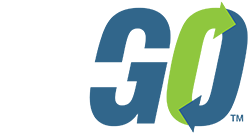People Over Process: How Technology Plays a Key Role in Employee Engagement

When HR and workforce management systems first hit the market, the employer and their priorities were top of mind. At its core were things like automating mundane tasks, introducing operational improvements, and improving business accuracy. However, employee ease of use was sometimes an afterthought.
Even as consumer tech evolved and workers became more comfortable with mobile and online platforms, there was still a dividing line between applications designed for personal use and those designed for business. It’s almost as if there was a sense that work systems didn’t have to be particularly enjoyable or engaging. They just needed to serve the needs of the employer.
This philosophy started to change in the 2010s. As smartphones, streaming services, and social media became more prevalent, the expectation was those business apps needed to behave more like consumer apps. Patience for extensive training and support wore thin. HR technology providers began to evolve their thinking as well. Most contemporary suppliers made their systems more consumer-like, but not all employers saw the need to upgrade or develop their systems.
Then the pandemic hit.
Within a matter of weeks, the imperative to adopt systems, processes, and procedures that were easier to use and embrace the changes in the lives of employees took on a whole new sense of urgency. With today’s labor shortages and attrition issues plaguing employers of all sizes and in every industry, the balance of power has shifted from employer to employee.
Simply stated: Businesses need to embrace, implement, and introduce applications that feature a “people first” philosophy or risk getting left behind. To get a sense of just how critical the situation has become, let’s look at a few statistics:
- 4.5 million workers resigned in November 2021 alone
- As of March 9, 2022, there are 11+ million unfilled jobs in the US
- Only 34% of U.S. workers consider themselves fully engaged (that’s a 10-year low)
- 53% of Gen Z and millennials plan to change employers this year
We’re witnessing a generational shift in how workers view, evaluate, and build their careers. After decades of the “rat race” and “climbing corporate ladders,” workers are reevaluating their priorities and placing personal fulfillment at the forefront.
LinkedIn sought to unpack this dynamic more deeply in their latest Global Talent Trends study. The results should be quite eye-opening for employers. Some noteworthy findings include:
- “Work-life balance” tops the list of what’s most important, even outpacing compensation as a top-level concern.
- Time and location flexibility is key, with employees indicating they’re 2.6x more likely to report being happy and, perhaps more critically, 2.1x more likely to recommend their employer to friends.
- Connection to a shared culture is also high on the list, as indicated by LinkedIn job posts mentioning culture receive a 67% boost in engagement.
The world of work has reached a pivotal turning point. The solutions, services, and systems you use must keep pace. At a time when employees are seeking greater autonomy and geographic independence, technology will play an ever-increasing role in keeping disparate teams connected, cohesive, and engaged.
But HR technology alone is not the answer. The HCM platform you choose can be a powerful tool and resource, but it must reinforce and support a corporate culture built around stability, trust, and a “people-first” mindset. When paired with an implementation process that embraces those traits, these fundamental building blocks will ensure your IT infrastructure supports the needs of your workforce today and delivers the flexibility you need to keep pace with culture shifts as time goes on.
Although we’re still in the relatively early stages of creating the post-COVID workforce, technology will play a key role in keeping workers aligned and engaged.
